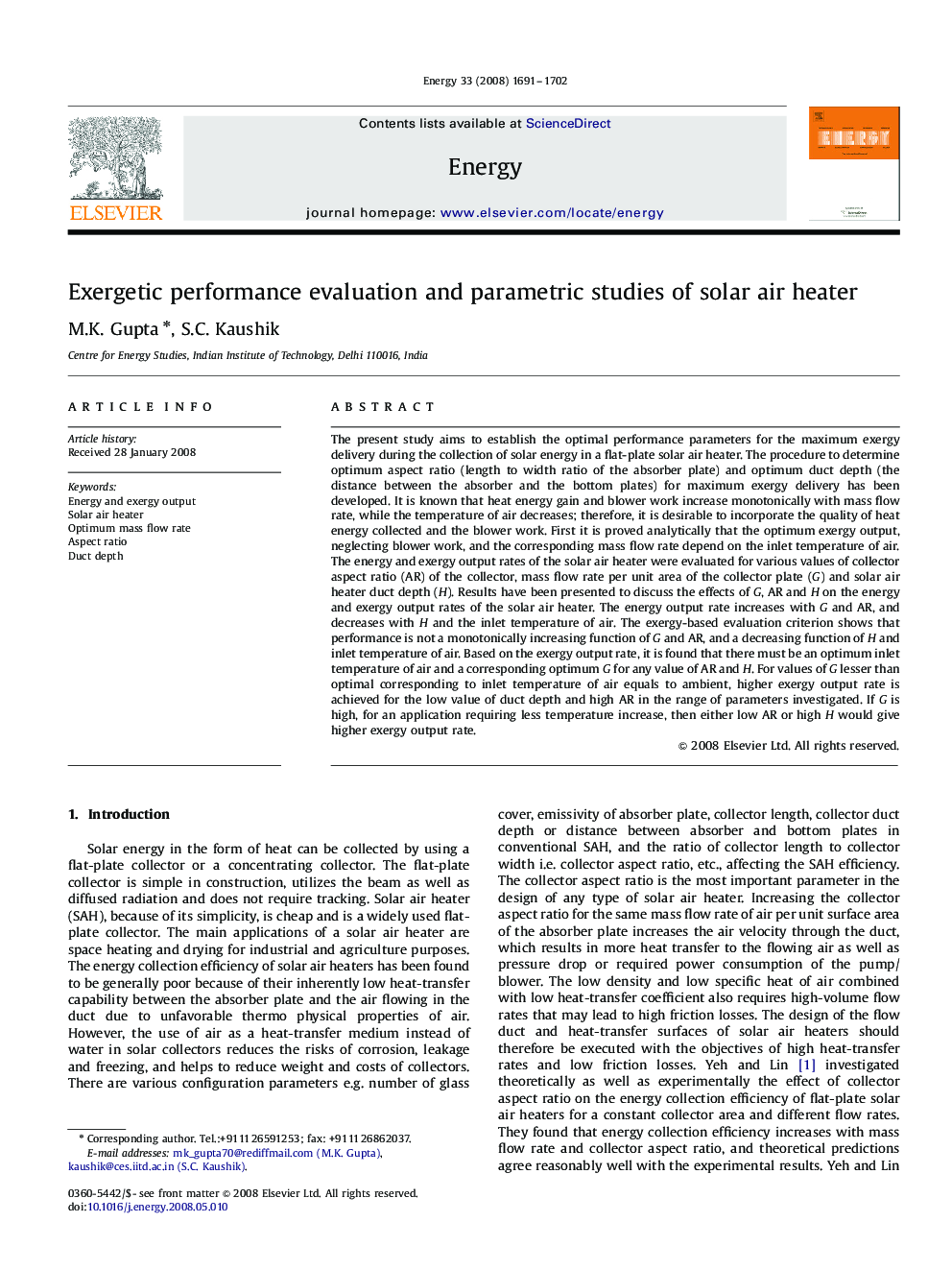| کد مقاله | کد نشریه | سال انتشار | مقاله انگلیسی | نسخه تمام متن |
|---|---|---|---|---|
| 1736009 | 1016202 | 2008 | 12 صفحه PDF | دانلود رایگان |

The present study aims to establish the optimal performance parameters for the maximum exergy delivery during the collection of solar energy in a flat-plate solar air heater. The procedure to determine optimum aspect ratio (length to width ratio of the absorber plate) and optimum duct depth (the distance between the absorber and the bottom plates) for maximum exergy delivery has been developed. It is known that heat energy gain and blower work increase monotonically with mass flow rate, while the temperature of air decreases; therefore, it is desirable to incorporate the quality of heat energy collected and the blower work. First it is proved analytically that the optimum exergy output, neglecting blower work, and the corresponding mass flow rate depend on the inlet temperature of air. The energy and exergy output rates of the solar air heater were evaluated for various values of collector aspect ratio (AR) of the collector, mass flow rate per unit area of the collector plate (G) and solar air heater duct depth (H). Results have been presented to discuss the effects of G, AR and H on the energy and exergy output rates of the solar air heater. The energy output rate increases with G and AR, and decreases with H and the inlet temperature of air. The exergy-based evaluation criterion shows that performance is not a monotonically increasing function of G and AR, and a decreasing function of H and inlet temperature of air. Based on the exergy output rate, it is found that there must be an optimum inlet temperature of air and a corresponding optimum G for any value of AR and H. For values of G lesser than optimal corresponding to inlet temperature of air equals to ambient, higher exergy output rate is achieved for the low value of duct depth and high AR in the range of parameters investigated. If G is high, for an application requiring less temperature increase, then either low AR or high H would give higher exergy output rate.
Journal: Energy - Volume 33, Issue 11, November 2008, Pages 1691–1702